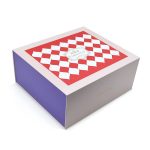
In the world of electronics, we often marvel at sleek smartphones, powerful laptops, and smart home devices. Yet, hidden behind these technological marvels lies a humble yet crucial element: the electronic component box. These unassuming containers play a vital role in protecting, organizing, and preserving the delicate components that power our digital lives. Without proper storage solutions, even the most advanced circuitry would be vulnerable to damage, static electricity, and environmental factors that could render them useless.
Electronic component boxes are engineered with precision to address the specific needs of electronic parts. They feature anti-static materials to prevent electrostatic discharge, which can instantly destroy sensitive components. The compartments are designed with various sizes and configurations to accommodate different shapes and types of components, from tiny resistors and capacitors to larger integrated circuits. Many boxes also include moisture-resistant seals and durable construction to protect against humidity, dust, and physical impact during storage or transportation.
For electronics enthusiasts, engineers, and repair technicians, a well-organized component box is more than just storage—it’s a productivity tool. Imagine needing to quickly find a specific resistor value during a critical repair or prototyping session. With a properly labeled and compartmentalized box, components are easily accessible, saving valuable time and reducing frustration. This organization becomes increasingly important as collections grow, preventing the all-too-common “box of random parts” scenario that plagues many workshops.
The evolution of electronic component boxes mirrors advancements in electronics themselves. Modern boxes feature improved materials like conductive plastics, transparent lids for easy identification, and stackable designs for efficient space utilization. Some high-end versions even include humidity indicators, customizable dividers, and RFID tagging capabilities for inventory management. These innovations demonstrate how even the most basic accessory continues to adapt to the changing needs of the electronics industry.
Beyond professional applications, electronic component boxes have become essential for educational purposes. Schools, makerspaces, and hobbyists use these storage solutions to teach electronics fundamentals while keeping components safe and organized. The psychological benefit shouldn’t be underestimated either—there’s a certain satisfaction in opening a neatly arranged component box that inspires creativity and careful workmanship. This organized approach often leads to better learning outcomes and more successful projects.
When selecting an electronic component box, several factors deserve consideration. The material should be static-dissipative or conductive for sensitive components. Compartment size and adjustability determine flexibility for different component types. Durability, especially for the hinges and latches, ensures long-term reliability. Portability features like handles or stackability might be important for those who need to transport their components. Finally, labeling systems—whether pre-printed, write-on surfaces, or digital options—can significantly enhance organization.
As we look toward the future of electronics, the humble component box will continue to evolve. We might see smart boxes with integrated inventory systems that automatically track component usage, or boxes made from sustainable materials that align with the industry’s growing environmental consciousness. The integration of IoT technology could enable boxes to communicate with design software, suggesting components based on project requirements. Whatever form these innovations take, the fundamental purpose remains: protecting the building blocks of our technological world.
In conclusion, while electronic component boxes might not garner the attention of flashy gadgets, their importance cannot be overstated. They represent the careful, organized foundation upon which electronic innovation is built. Whether you’re a professional engineer, a student, or a hobbyist, investing in quality component storage is investing in the success of your electronic endeavors. The right box doesn’t just store components—it preserves possibilities, protects investments, and ultimately enables the creation of the amazing technology that shapes our modern world.




Leave a Message